Datasheet
Year, pagecount:2005, 4 page(s)
Language:English
Downloads:2
Uploaded:January 11, 2018
Size:495 KB
Institution:
-
Comments:
Attachment:-
Download in PDF:Please log in!
Comments
No comments yet. You can be the first!Most popular documents in this category
Content extract
Source: http://www.doksinet 98C Microbiology Education at NUSMB Taylor & VTK Chow The Evolution of Teaching and Learning Medical Microbiology and Infectious Diseases at NUS MB Taylor,1MBBS, PhD, FRCPath, VTK Chow,1MD, PhD, FRCPath Abstract Infectious diseases were rife during the early years of the Singapore Medical College, which was established in 1905. The current Department of Microbiology in the National University of Singapore (NUS) has its historical roots in the Departments of Bacteriology and Parasitology, which were established in 1925 and 1950 respectively. With the achievements since its inception, and with its present research focus on Infectious Diseases, Immunology, Applied and Environmental Microbiology, it is poised to face the microbiological challenges of the 21st century. Over the decades, the structure of the medical microbiology course in NUS has modernised, culminating in the current emphasis on its practical utility in clinical practice. Coordinated by
the Department of Microbiology, the Microbiology and Infectious Diseases module and the Immunology module both adopt integrated multidisciplinary approaches that aim to introduce students to the language and fundamental concepts in microbiology, infectious diseases and immunology. Ann Acad Med Singapore 2005;34:98C-101C Key words: Bacteriology, Education, History, Immunology, Mycology, Parasitology, Vaccines, Virology Introduction The Straits and Federated Malay States Government Medical School was founded in 1905. Dr Chen Su Lan, 1 of the 7 graduates in the first class to qualify in March 1910, reminisced in 1965 on his training experiences: “Among the ‘killer’ diseases were malaria (there were 20 deaths a day in the Singapore Municipal area alone in 1911), dysentery, beri-beri (its aetiology then unknown), tuberculosis (no specific treatment for it), venereal disease (in almost every Straits-born home and long before the discovery of penicillin). The graduates were expected to
grapple with and alleviate these monstrous diseases.” His second anatomy dissection was on the corpse of a young woman “who had the scars of all stages of syphilis”. Infectious diseases were rife during those early years of the medical college.1 Historical Development of the University Department of Microbiology The present Department of Microbiology has 2 parents, i.e, the former Departments of Bacteriology and Parasitology.2 The Department of Bacteriology came into existence in 1925, when the Rockefeller Foundation generously funded the institution of a Chair of Bacteriology, and its first incumbent was Professor A Kneave Kingsbury.3 Two years later, he moved to a new position in Kuala Lumpur, and was succeeded by Professor WA Young (Fig. 1), who with great energy built up the Department into a substantial facility involved in teaching, routine bacteriological work and vaccine production. He also created a flourishing animal facility. Perhaps understandably, given the volume
of his other duties, and the fact that he served as Acting Principal of the College of Medicine from 1945 when he returned to the then recently liberated island, he never published a scientific paper despite being involved in research on leprosy and other topics. He was succeeded in 1947 by Professor Nripendra Kumar Sen, who alas was forced into early retirement by chronic ill-health consequent upon his internment in World War II. He had performed work on brucellosis in Singapore’s then numerous cattle, and also gave the island its own eponymous pathogen, i.e, Salmonella Singapore (now S enterica serovar Singapore). Professor JH Hale took over in 1952, and as a virologist he fostered changes in the emphasis of the Department’s work. The Department built its first air-conditioned 1 Department of Microbiology National University of Singapore, Singapore Address for Correspondence: Associate Professor Vincent Chow, Department of Microbiology, Faculty of Medicine, National University
of Singapore, 5 Science Drive 2, Singapore 117597. Annals Academy of Medicine Source: http://www.doksinet Microbiology Education at NUSMB Taylor & VTK Chow 99C Fig. 1 The class of 1929 The first set of graduates to complete the newly instituted 6-year course recommended by the British General Medical Council. Professor Young is seated second from the left; the newly qualified Benjamin Sheares stands behind his right shoulder, with ES Monteiro (Dean, 1956-1960) standing to Sheares’ right.4 laboratory in 1954 to 1955, allowing tissue culture work to be performed successfully – previous attempts had failed due to the high microbiological load of the local air.5 Research on poliomyelitis was carried out, and the Sabin vaccine was distributed under its aegis. The emphasis of the Department’s work had changed from the days of the vigorous but publication-shy Professor Young. In 1954, the “Report of the Committee of Enquiry on Medical Education in Malaya” was published,
noting that by that time “the Department of Bacteriology has no routine diagnostic work [and] the present Professor of Bacteriology has no official relationship with the Teaching Hospital” and suggested that the University Department could assume a useful role as a reference laboratory to local diagnostic service facilities.6 Professor Lim Kok Ann headed the Department of Bacteriology from 1959 to 1977. He was the first to isolate the new pandemic strain of Asian influenza virus in 1957. Research on Japanese encephalitis and dengue viruses was also performed, and the Department was designated a Regional Reference Laboratory for Poliomyelitis (1955) and later also for Enteroviruses (1962) by the World Health Organisation (WHO). An exhibition mounted to celebrate “70 years of Medical Education in Singapore” featured sections reflecting these interests, and also demonstrations of mycoplasma cultures and (mysterious to the present authors, and strange to both Dorland’s Medical
Dictionary and PubMed) “Singapore Sore Eye” – an acute haemorrhagic conjunctivitis.7 Professor Lim served as Dean of Medicine from 1965 to 1972. He was also July 2005, Vol. 34 No 6 Singapore’s first chess champion in 1949, and repeated the feat many times in subsequent years. Professor Lim established and headed the Singapore Chess Federation for 18 years, and was Secretary-General of the FIDE (World Chess Federation) from 1982 to 1988.8 He died in 2003, at the age of 83. The Department of Parasitology had its own academic parent. Originally, Parasitology was taught by the Department of Biology of the King Edward VII College of Medicine.3 The first 2 holders of the Chair were medical entomologists (KB Williamson, then BAR Gater). The 2 Departmental Assistants during their periods of tenure were Dr AA Sandosham (helminthology) and Dr See Yew Kok (protozoology). In 1950, separate Departments of Botany and Zoology were created within the Faculty of Science, and the Department of
Biology in the Faculty of Medicine became the new Department of Parasitology under Professor Sandosham. In 1960, Professor Robert Desowitz assumed the Chair and under his leadership, the Department engaged in research on the immune response to malaria, the epidemiology of filariasis, and the biochemistry of and immune response to hookworms. In 1965, he was succeeded by Professor Viqar Zaman, who was already a member of the Department. Professor Zaman’s elegant photomicrographs of parasites have been featured in several textbooks still used by medical and science students worldwide. In 1977, the 2 departments of Bacteriology and Parasitology were united as the Department of Microbiology under the leadership of Professor Zaman. In a memorial Source: http://www.doksinet 100C Microbiology Education at NUSMB Taylor & VTK Chow publication “75 Years of Medical Education”, published in 1980,2 the new amalgamated Department was reported as active in teaching both medical and
science students. Immunology research included studies of the interaction between Epstein-Barr virus and the immune system of patients with nasopharyngeal cancer, and the patterns of distribution of human leukocyte antigens in patients with leprosy and sexually transmitted diseases. Bacteriology studies included work on the Limulus amoebocyte lysate gel assay for endotoxin detection, and the ability of Desulfovibrio desulfuricans to corrode steel. Virologists continued to focus on enteroviruses and dengue. Studies on the epidemiology of dermatophyte fungi, experimental models of filariasis in rat and monkey models, and immunodiagnosis of filarial infections completed a very comprehensive programme in what was clearly a flourishing new department. Professor Zaman handed the reins to Professor Chan Soh Ha in 1991. Professor Chan is an immunologist and established the WHO Centre for Research and Training in Immunology within the Department. Today, the Department of Microbiology in the
National University of Singapore (NUS) has achieved great strides since its inception, and currently has 20 academic staff members. With its present research focused on Infectious Diseases, Immunology, and Applied and Environmental Microbiology, it is poised to face the microbiological challenges of the 21st century – natural and man-made. Evolution of Teaching and Learning Microbiology, Infectious Diseases and Immunology in NUS Over the decades, the structure of the medical microbiology course has modernised, culminating in the current emphasis on its practical utility in clinical practice. Although the Department of Microbiology serves as the anchor department that coordinates the Microbiology and Infectious Diseases module and the Immunology module, an integrated multidisciplinary approach is adopted. These modules aim to introduce students to the language and fundamental concepts in microbiology, infectious diseases and immunology. Besides staff members from the Department of
Microbiology, these closely related modules are also taught by colleagues from the University Departments of Anatomy, Community, Occupational and Family Medicine (COFM), Medicine, Paediatrics, Pathology, Pharmacology and Physiology, as well as by infectious disease physicians from the Communicable Disease Centre, National Skin Centre, National University Hospital, Singapore General Hospital and Tan Tock Seng Hospital. The Microbiology and Infectious Diseases module provides the basic and applied principles of general microbiology, virology, bacteriology, mycology and parasitology essential for the understanding of infectious diseases. Emphasis is placed on the scientific concepts, clinical features, laboratory diagnosis, treatment, prevention and control of microbial diseases, particularly those relevant to Singapore and the region. The module also integrates basic microbiological knowledge with clinical infectious diseases. The General Microbiology component covers microbial agents,
host-parasite interactions, inflammatory responses, disinfection, sterilisation and other related issues. The Virology topics include clinical perspective of viral diseases, introduction to medical virology, respiratory tract viruses, measles, mumps and rubella viruses, herpes viruses (including therapy), enteroviruses, hepatitis viruses, the human immunodeficiency virus, dengue viruses, and miscellaneous viruses. The Bacteriology and Mycology sections deal with clinical perspective of bacterial infections, general and diagnostic bacteriology, staphylococci, streptococci and enterococci, Gram-negative cocci, Enterobacteriaceae, pseudomonads, other Gram-negative bacilli, Gram-positive bacilli, anaerobes, spiral bacteria, chlamydias, mycoplasmas, Rickettsiae, mycobacteria, antitubercular drugs, antimicrobial drugs, principles of antibacterial therapy, antimicrobial resistance, clinical bacteriology, introduction to medical mycology, dermatological fungal infections, systemic fungal
infections, superficial, subcutaneous and dimorphic fungal infections, antifungal agents, and clinical mycology. Topics covered under Parasitology are malaria, malarial parasites and other protozoa, amoebae and flagellates, coccidia, nematodes and filariae, cestodes and trematodes, and arthropods. Important aspects covered under the section on Infectious Diseases of the various body systems include central nervous system infections, respiratory tract infections, gastrointestinal infections (including enteric fever), urinary tract infection, sexually transmitted diseases, skin, soft tissue, bone and joint infections, bacteraemia, septicaemia and endocarditis, hospital-acquired infections, post-infectious disorders, epidemiology, prevention and control of communicable diseases, and molecular biological approaches and applications in infectious diseases. The Immunology module provides an overview of the components of the immune system and their functions. It provides an understanding of
the basis of innate and acquired immune responses, the role of the immune system in health and disease, and the appreciation of the basis of the diagnosis, control and treatment of immune-mediated diseases. The contents of this module comprise an overview and structure of the immune system, anatomy and histology of immune organs, antigens, antibodies, antigen-antibody reactions, complement, cell-mediated immunity, immune response genes, tolerance, hypersensitivity, autoimmunity, immunodeficiency, infection immunology, transplantation Annals Academy of Medicine Source: http://www.doksinet Microbiology Education at NUSMB Taylor & VTK Chow immunology, clinical immunology, immunopharmacology, corticosteroids, non-steroidal anti-inflammatory drugs, and drug treatment of arthritis. Extending over the second year of the preclinical course, these modules consist of lectures, practical classes, demonstrations, tutorials, seminars, video presentations and computer-aided learning. For
example, the clinical relevance of the subjects is illustrated by certain laboratory exercises.9,10 In addition, specific case studies under problem-based learning (PBL) include topics related to microbiology and immunology such as tuberculosis and immuno-deficiency. These modules are examined via continuous assessments and in the Second Professional (Part I) Examination for the degrees of Bachelor of Medicine and Bachelor of Surgery (MB, BS). In conclusion, medical students are constantly reminded to build a solid foundation in microbiological and immunological concepts – including advances in molecular biology, antimicrobial therapy and vaccine development – and to learn to apply these to clinical practice. They are also encouraged to engage in self-directed learning throughout the course and after graduation to acquire new knowledge, for example, on newly emerging infectious diseases in the future.11-13 Acknowledgements The significant contributions of academic, non-academic and
clinical colleagues towards the teaching and learning of Microbiology, Infectious Diseases and Immunology in Singapore over the past century are acknowledged. The authors wish to dedicate this article to past, present and future generations of students and teachers of these disciplines in Singapore. We would particularly like to July 2005, Vol. 34 No 6 101C thank Mrs Shirley Aw and her staff of the NUS Medical Library for their assistance in finding relevant historical references. REFERENCES 1. Muir CS, Wong PK, editors Souvenir Publication Sixty Years of Medical Education, 1905-1965. Singapore: University of Singapore Medical Society, 1965. 2. Wong WC 75 years (1905-1980) of Medical Education Singapore: Faculty of Medicine, National University of Singapore, 1980. 3. Sreenivasan BR, editor Souvenir Publication Fifty Years of Medical Education in Malaya, 1905-1955. Singapore: University of Malaya, 1955. 4. Lee YK, editor History of College of Medicine Building, Medical Education and
Medical Services in Singapore, 1819-1900. Singapore: Annals, Academy of Medicine, Singapore, 1992. 5. Lee E, Tan TY Beyond Degrees: the Making of the National University of Singapore. Singapore: Singapore University Press, 1996 6. Report of the Committee of Enquiry on Medical Education in Malaya, November-December 1953. Singapore: Government Printing Office, 1954. 7. Chan YC 70 years of Medical Education in Singapore, 1905-1975: Opening Ceremony of Medical Exhibition, Faculty of Medicine, Sepoy Lines, Singapore, 2 August 1975. Singapore: Faculty of Medicine, University of Singapore, 1975. 8. Saunders JC, editor British Chess Magazine Personal communication, 2004. 9. Chow VTK Rapid detection of varicella-zoster viral antibodies by latex agglutination assay: a practical experience for medical and science undergraduates. Biochem Educ 1998;26:248-51 10. Chow VTK, Chan SH Humoral immune response to hepatitis B vaccination: a laboratory practical for medical and bioscience undergraduates.
Biochem Educ 1999;27:55-8 11. Morens DM, Folkers GK, Fauci AS The challenge of emerging and reemerging infectious diseases Nature 2004;430:242-9 12. McNulty CA Optimising antibiotic prescribing in primary care Int J Antimicrob Agents 2001;18:329-33. 13. Colgan R, Powers JH Appropriate antimicrobial prescribing: approaches that limit antibiotic resistance. Am Fam Physician 2001;64:999-1004
the Department of Microbiology, the Microbiology and Infectious Diseases module and the Immunology module both adopt integrated multidisciplinary approaches that aim to introduce students to the language and fundamental concepts in microbiology, infectious diseases and immunology. Ann Acad Med Singapore 2005;34:98C-101C Key words: Bacteriology, Education, History, Immunology, Mycology, Parasitology, Vaccines, Virology Introduction The Straits and Federated Malay States Government Medical School was founded in 1905. Dr Chen Su Lan, 1 of the 7 graduates in the first class to qualify in March 1910, reminisced in 1965 on his training experiences: “Among the ‘killer’ diseases were malaria (there were 20 deaths a day in the Singapore Municipal area alone in 1911), dysentery, beri-beri (its aetiology then unknown), tuberculosis (no specific treatment for it), venereal disease (in almost every Straits-born home and long before the discovery of penicillin). The graduates were expected to
grapple with and alleviate these monstrous diseases.” His second anatomy dissection was on the corpse of a young woman “who had the scars of all stages of syphilis”. Infectious diseases were rife during those early years of the medical college.1 Historical Development of the University Department of Microbiology The present Department of Microbiology has 2 parents, i.e, the former Departments of Bacteriology and Parasitology.2 The Department of Bacteriology came into existence in 1925, when the Rockefeller Foundation generously funded the institution of a Chair of Bacteriology, and its first incumbent was Professor A Kneave Kingsbury.3 Two years later, he moved to a new position in Kuala Lumpur, and was succeeded by Professor WA Young (Fig. 1), who with great energy built up the Department into a substantial facility involved in teaching, routine bacteriological work and vaccine production. He also created a flourishing animal facility. Perhaps understandably, given the volume
of his other duties, and the fact that he served as Acting Principal of the College of Medicine from 1945 when he returned to the then recently liberated island, he never published a scientific paper despite being involved in research on leprosy and other topics. He was succeeded in 1947 by Professor Nripendra Kumar Sen, who alas was forced into early retirement by chronic ill-health consequent upon his internment in World War II. He had performed work on brucellosis in Singapore’s then numerous cattle, and also gave the island its own eponymous pathogen, i.e, Salmonella Singapore (now S enterica serovar Singapore). Professor JH Hale took over in 1952, and as a virologist he fostered changes in the emphasis of the Department’s work. The Department built its first air-conditioned 1 Department of Microbiology National University of Singapore, Singapore Address for Correspondence: Associate Professor Vincent Chow, Department of Microbiology, Faculty of Medicine, National University
of Singapore, 5 Science Drive 2, Singapore 117597. Annals Academy of Medicine Source: http://www.doksinet Microbiology Education at NUSMB Taylor & VTK Chow 99C Fig. 1 The class of 1929 The first set of graduates to complete the newly instituted 6-year course recommended by the British General Medical Council. Professor Young is seated second from the left; the newly qualified Benjamin Sheares stands behind his right shoulder, with ES Monteiro (Dean, 1956-1960) standing to Sheares’ right.4 laboratory in 1954 to 1955, allowing tissue culture work to be performed successfully – previous attempts had failed due to the high microbiological load of the local air.5 Research on poliomyelitis was carried out, and the Sabin vaccine was distributed under its aegis. The emphasis of the Department’s work had changed from the days of the vigorous but publication-shy Professor Young. In 1954, the “Report of the Committee of Enquiry on Medical Education in Malaya” was published,
noting that by that time “the Department of Bacteriology has no routine diagnostic work [and] the present Professor of Bacteriology has no official relationship with the Teaching Hospital” and suggested that the University Department could assume a useful role as a reference laboratory to local diagnostic service facilities.6 Professor Lim Kok Ann headed the Department of Bacteriology from 1959 to 1977. He was the first to isolate the new pandemic strain of Asian influenza virus in 1957. Research on Japanese encephalitis and dengue viruses was also performed, and the Department was designated a Regional Reference Laboratory for Poliomyelitis (1955) and later also for Enteroviruses (1962) by the World Health Organisation (WHO). An exhibition mounted to celebrate “70 years of Medical Education in Singapore” featured sections reflecting these interests, and also demonstrations of mycoplasma cultures and (mysterious to the present authors, and strange to both Dorland’s Medical
Dictionary and PubMed) “Singapore Sore Eye” – an acute haemorrhagic conjunctivitis.7 Professor Lim served as Dean of Medicine from 1965 to 1972. He was also July 2005, Vol. 34 No 6 Singapore’s first chess champion in 1949, and repeated the feat many times in subsequent years. Professor Lim established and headed the Singapore Chess Federation for 18 years, and was Secretary-General of the FIDE (World Chess Federation) from 1982 to 1988.8 He died in 2003, at the age of 83. The Department of Parasitology had its own academic parent. Originally, Parasitology was taught by the Department of Biology of the King Edward VII College of Medicine.3 The first 2 holders of the Chair were medical entomologists (KB Williamson, then BAR Gater). The 2 Departmental Assistants during their periods of tenure were Dr AA Sandosham (helminthology) and Dr See Yew Kok (protozoology). In 1950, separate Departments of Botany and Zoology were created within the Faculty of Science, and the Department of
Biology in the Faculty of Medicine became the new Department of Parasitology under Professor Sandosham. In 1960, Professor Robert Desowitz assumed the Chair and under his leadership, the Department engaged in research on the immune response to malaria, the epidemiology of filariasis, and the biochemistry of and immune response to hookworms. In 1965, he was succeeded by Professor Viqar Zaman, who was already a member of the Department. Professor Zaman’s elegant photomicrographs of parasites have been featured in several textbooks still used by medical and science students worldwide. In 1977, the 2 departments of Bacteriology and Parasitology were united as the Department of Microbiology under the leadership of Professor Zaman. In a memorial Source: http://www.doksinet 100C Microbiology Education at NUSMB Taylor & VTK Chow publication “75 Years of Medical Education”, published in 1980,2 the new amalgamated Department was reported as active in teaching both medical and
science students. Immunology research included studies of the interaction between Epstein-Barr virus and the immune system of patients with nasopharyngeal cancer, and the patterns of distribution of human leukocyte antigens in patients with leprosy and sexually transmitted diseases. Bacteriology studies included work on the Limulus amoebocyte lysate gel assay for endotoxin detection, and the ability of Desulfovibrio desulfuricans to corrode steel. Virologists continued to focus on enteroviruses and dengue. Studies on the epidemiology of dermatophyte fungi, experimental models of filariasis in rat and monkey models, and immunodiagnosis of filarial infections completed a very comprehensive programme in what was clearly a flourishing new department. Professor Zaman handed the reins to Professor Chan Soh Ha in 1991. Professor Chan is an immunologist and established the WHO Centre for Research and Training in Immunology within the Department. Today, the Department of Microbiology in the
National University of Singapore (NUS) has achieved great strides since its inception, and currently has 20 academic staff members. With its present research focused on Infectious Diseases, Immunology, and Applied and Environmental Microbiology, it is poised to face the microbiological challenges of the 21st century – natural and man-made. Evolution of Teaching and Learning Microbiology, Infectious Diseases and Immunology in NUS Over the decades, the structure of the medical microbiology course has modernised, culminating in the current emphasis on its practical utility in clinical practice. Although the Department of Microbiology serves as the anchor department that coordinates the Microbiology and Infectious Diseases module and the Immunology module, an integrated multidisciplinary approach is adopted. These modules aim to introduce students to the language and fundamental concepts in microbiology, infectious diseases and immunology. Besides staff members from the Department of
Microbiology, these closely related modules are also taught by colleagues from the University Departments of Anatomy, Community, Occupational and Family Medicine (COFM), Medicine, Paediatrics, Pathology, Pharmacology and Physiology, as well as by infectious disease physicians from the Communicable Disease Centre, National Skin Centre, National University Hospital, Singapore General Hospital and Tan Tock Seng Hospital. The Microbiology and Infectious Diseases module provides the basic and applied principles of general microbiology, virology, bacteriology, mycology and parasitology essential for the understanding of infectious diseases. Emphasis is placed on the scientific concepts, clinical features, laboratory diagnosis, treatment, prevention and control of microbial diseases, particularly those relevant to Singapore and the region. The module also integrates basic microbiological knowledge with clinical infectious diseases. The General Microbiology component covers microbial agents,
host-parasite interactions, inflammatory responses, disinfection, sterilisation and other related issues. The Virology topics include clinical perspective of viral diseases, introduction to medical virology, respiratory tract viruses, measles, mumps and rubella viruses, herpes viruses (including therapy), enteroviruses, hepatitis viruses, the human immunodeficiency virus, dengue viruses, and miscellaneous viruses. The Bacteriology and Mycology sections deal with clinical perspective of bacterial infections, general and diagnostic bacteriology, staphylococci, streptococci and enterococci, Gram-negative cocci, Enterobacteriaceae, pseudomonads, other Gram-negative bacilli, Gram-positive bacilli, anaerobes, spiral bacteria, chlamydias, mycoplasmas, Rickettsiae, mycobacteria, antitubercular drugs, antimicrobial drugs, principles of antibacterial therapy, antimicrobial resistance, clinical bacteriology, introduction to medical mycology, dermatological fungal infections, systemic fungal
infections, superficial, subcutaneous and dimorphic fungal infections, antifungal agents, and clinical mycology. Topics covered under Parasitology are malaria, malarial parasites and other protozoa, amoebae and flagellates, coccidia, nematodes and filariae, cestodes and trematodes, and arthropods. Important aspects covered under the section on Infectious Diseases of the various body systems include central nervous system infections, respiratory tract infections, gastrointestinal infections (including enteric fever), urinary tract infection, sexually transmitted diseases, skin, soft tissue, bone and joint infections, bacteraemia, septicaemia and endocarditis, hospital-acquired infections, post-infectious disorders, epidemiology, prevention and control of communicable diseases, and molecular biological approaches and applications in infectious diseases. The Immunology module provides an overview of the components of the immune system and their functions. It provides an understanding of
the basis of innate and acquired immune responses, the role of the immune system in health and disease, and the appreciation of the basis of the diagnosis, control and treatment of immune-mediated diseases. The contents of this module comprise an overview and structure of the immune system, anatomy and histology of immune organs, antigens, antibodies, antigen-antibody reactions, complement, cell-mediated immunity, immune response genes, tolerance, hypersensitivity, autoimmunity, immunodeficiency, infection immunology, transplantation Annals Academy of Medicine Source: http://www.doksinet Microbiology Education at NUSMB Taylor & VTK Chow immunology, clinical immunology, immunopharmacology, corticosteroids, non-steroidal anti-inflammatory drugs, and drug treatment of arthritis. Extending over the second year of the preclinical course, these modules consist of lectures, practical classes, demonstrations, tutorials, seminars, video presentations and computer-aided learning. For
example, the clinical relevance of the subjects is illustrated by certain laboratory exercises.9,10 In addition, specific case studies under problem-based learning (PBL) include topics related to microbiology and immunology such as tuberculosis and immuno-deficiency. These modules are examined via continuous assessments and in the Second Professional (Part I) Examination for the degrees of Bachelor of Medicine and Bachelor of Surgery (MB, BS). In conclusion, medical students are constantly reminded to build a solid foundation in microbiological and immunological concepts – including advances in molecular biology, antimicrobial therapy and vaccine development – and to learn to apply these to clinical practice. They are also encouraged to engage in self-directed learning throughout the course and after graduation to acquire new knowledge, for example, on newly emerging infectious diseases in the future.11-13 Acknowledgements The significant contributions of academic, non-academic and
clinical colleagues towards the teaching and learning of Microbiology, Infectious Diseases and Immunology in Singapore over the past century are acknowledged. The authors wish to dedicate this article to past, present and future generations of students and teachers of these disciplines in Singapore. We would particularly like to July 2005, Vol. 34 No 6 101C thank Mrs Shirley Aw and her staff of the NUS Medical Library for their assistance in finding relevant historical references. REFERENCES 1. Muir CS, Wong PK, editors Souvenir Publication Sixty Years of Medical Education, 1905-1965. Singapore: University of Singapore Medical Society, 1965. 2. Wong WC 75 years (1905-1980) of Medical Education Singapore: Faculty of Medicine, National University of Singapore, 1980. 3. Sreenivasan BR, editor Souvenir Publication Fifty Years of Medical Education in Malaya, 1905-1955. Singapore: University of Malaya, 1955. 4. Lee YK, editor History of College of Medicine Building, Medical Education and
Medical Services in Singapore, 1819-1900. Singapore: Annals, Academy of Medicine, Singapore, 1992. 5. Lee E, Tan TY Beyond Degrees: the Making of the National University of Singapore. Singapore: Singapore University Press, 1996 6. Report of the Committee of Enquiry on Medical Education in Malaya, November-December 1953. Singapore: Government Printing Office, 1954. 7. Chan YC 70 years of Medical Education in Singapore, 1905-1975: Opening Ceremony of Medical Exhibition, Faculty of Medicine, Sepoy Lines, Singapore, 2 August 1975. Singapore: Faculty of Medicine, University of Singapore, 1975. 8. Saunders JC, editor British Chess Magazine Personal communication, 2004. 9. Chow VTK Rapid detection of varicella-zoster viral antibodies by latex agglutination assay: a practical experience for medical and science undergraduates. Biochem Educ 1998;26:248-51 10. Chow VTK, Chan SH Humoral immune response to hepatitis B vaccination: a laboratory practical for medical and bioscience undergraduates.
Biochem Educ 1999;27:55-8 11. Morens DM, Folkers GK, Fauci AS The challenge of emerging and reemerging infectious diseases Nature 2004;430:242-9 12. McNulty CA Optimising antibiotic prescribing in primary care Int J Antimicrob Agents 2001;18:329-33. 13. Colgan R, Powers JH Appropriate antimicrobial prescribing: approaches that limit antibiotic resistance. Am Fam Physician 2001;64:999-1004
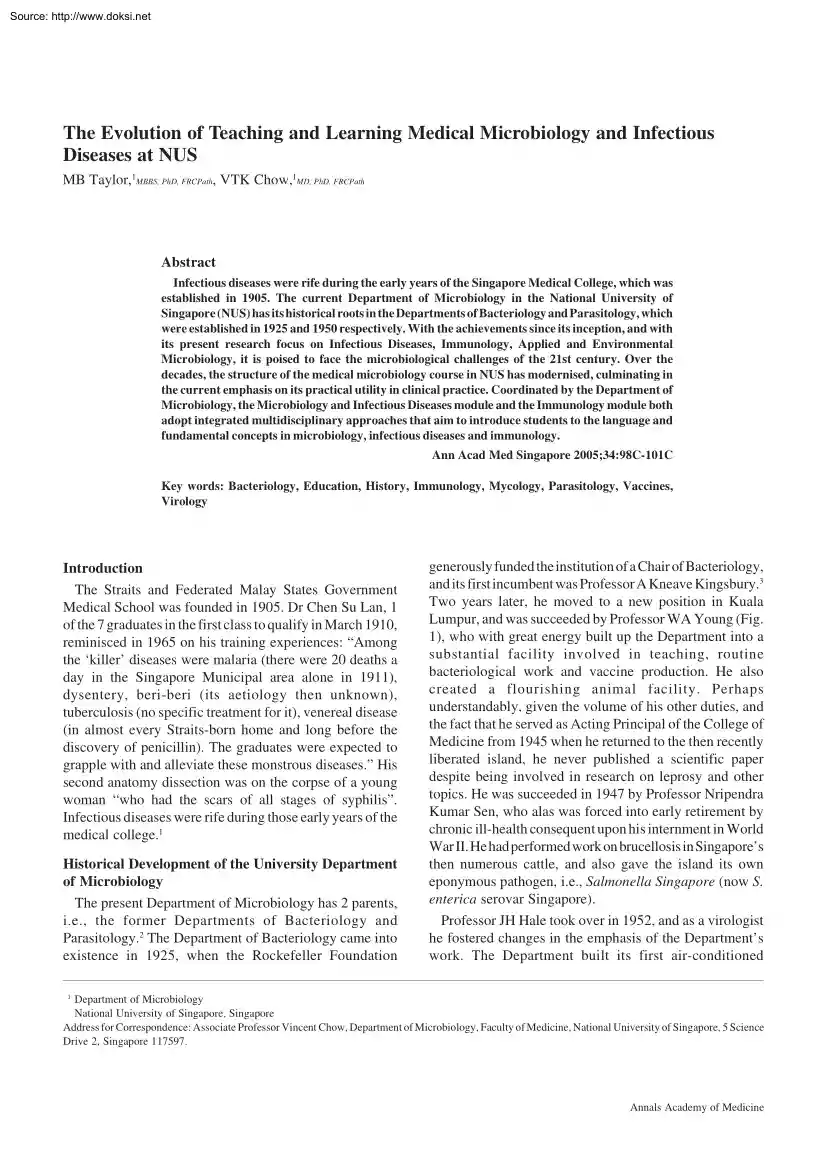
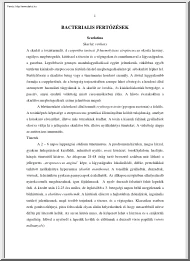
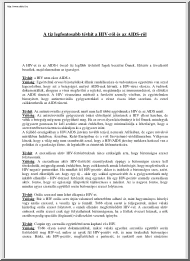
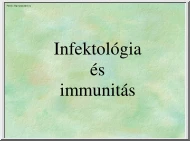
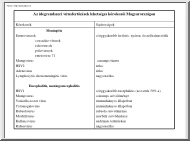
 Just like you draw up a plan when you’re going to war, building a house, or even going on vacation, you need to draw up a plan for your business. This tutorial will help you to clearly see where you are and make it possible to understand where you’re going.
Just like you draw up a plan when you’re going to war, building a house, or even going on vacation, you need to draw up a plan for your business. This tutorial will help you to clearly see where you are and make it possible to understand where you’re going.